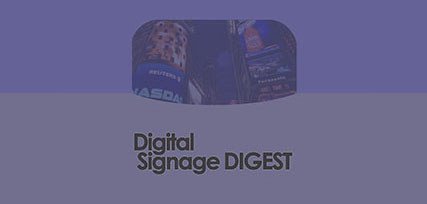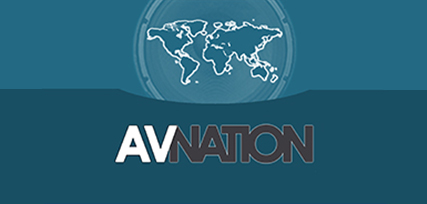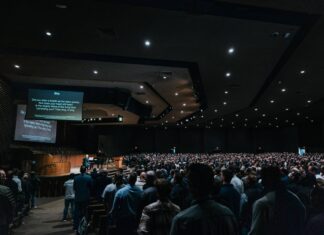[bc_video video_id=”6233815775001″ account_id=”6090301008001″ player_id=”oHD7hwUmF” embed=”in-page” padding_top=”56%” autoplay=”” min_width=”0px” playsinline=”” picture_in_picture=”” max_width=”640px” mute=”” width=”100%” height=”100%” ]
Do we need another podcast or blog? This was something Tim Albright and I have been talking about for a couple years. Due to nondisclosure agreements with my previous employer I was not able to create the show that I wanted. Now that my employer is me, I can do it. Tim told me to go and have fun and do a show that I want to do. So this is what I’m doing. It’s called Project Bradford, the AVNation editorial staff had a vote and I lost. I wanted to
Do we need another podcast or blog? This was something Tim Albright and I have been talking about for a couple years. Due to nondisclosure agreements with my previous employer I was not able to create the show that I wanted. Now that my employer is me, I can do it. Tim told me to go and have fun and do a show that I want to do. So this is what I’m doing. It’s called Project Bradford, the AVNation editorial staff had a vote and I lost. I wanted to call it Bradford’s Variety Hour or Bradford’s Variety Show, the reason is, is not every show is going to be the same.
We’re going to categorize them as we do them. Some are going to be exposition, like this episode and post is, some are going to be long form interviews. That is what drove me to start this project. In the 1980s, there was Tom Snyder’s Tomorrow show that came on after Late Night with David Letterman. It was a long form interview. The show was cancelled and then Bob Costas had the Later show, people have said that David Letterman is now doing this on his Netflix show.
I’m still going to appear on other AVNation shows, I’m still going to do other shows. But this is my chance to talk with people and get to learn more. It’s not solely about AV people. They will all be AV adjacent or technology related. The idea being is let’s learn, let’s talk. It’s not just going to be about what’s the next technology.
A lot of the stuff we do on AVNation is live to recording. There are times I want to be able to talk with people and not worry about the time. There will be editing, there’ll be retakes.
I don’t know what we’re in for. Tim doesn’t know what we’re in for. Matt Scott already decided he needs to come and take over my show so I can see what it’s like. I am just going to see what happens. It’ll be an adventure together. The goal is to provide a show that is entertaining and not just technology talk. It is about getting to know people and learn new things.
Project Bradford is going to post every Thursday. The show will be posted both here at AVNation as well as at Advisist.com. For this episode, I didn’t book a guest. I am going talk a little bit about my studio, how I do these things, because people have asked on Twitter. I think it’s worth sharing some of the tips and tricks.
When I have linked to an item on Amazon, I get a little money, for being an Amazon affiliate.
I’m going to go through my studio, go through the basic components of it, I’m not going to go into every single detail, because I think it can get a little overwhelming. There will be additional information shared in the future. The video might be the most informative way to learn but fear not I have created a simple flow diagram, an audio only version, and this text version. I want to provide you content in the way you want to consume it. If I am missing something, let me know.
At the heart of my system is an ATEM Mini. It is from Blackmagic, it has four HDMI (High Definition Media Interface) inputs, it has two stereo inputs that are both mic or line level, one monitor out and one USB-C (Universal Serial Bus C connector style) out. The ATEM Mini appears as a webcam to a computer. You can use the hardware with multiple conferencing platforms. it’s interchangeable with all the different operating systems. In the easiest way to put it, it is a webcam that has super powers.
One can select any of the four inputs to be routed to the program out, you also can do a picture in picture, downstream key, and an upstream key. This allows for doing a lower third graphic across the bottom of the image. The ATEM can also do green screen or Chroma Key in real time. The audio does not need to follow video in this hardware, one can embed new content as well from other inputs.. It is configured either through the software using an Ethernet connection and IP (Internet Protocol) connection, through a USB connection, or through the hardware itself. There’s only one control, the downstream key, that is not accessible through the hardware interface. The ATEM is compatible with Open Sound Control. This feature allows for much cleaner integration with the system then I had expected.
The next piece of the system is an Elgato Stream Deck XL, which has 32 keys, each key can have multiple functions. The keys have little LCD color displays on them so that you can tell you have you programmed them to do. The software has multiple profiles that allow for the functions of each button to change dynamically. I use this hardware to send out commands to various items, not just to the ATEM, Mini, but also to QLab. I also use it in my normal day to day computer use. The fact that I can do a quick key or quick text becomes very powerful. When I’m filling out a web form, I have a button that types in my email address; I have a button that types in my street. It also helps address the issue of different key commands for different software. I created a button that’s labeled crop and using Stream Deck profiles, Adobe Photoshop, or Illustrator, or Lightroom, or even Preview on my Mac, the same button does the same feature.
The Stream Deck also can send MIDI (Musical Instrument Digital Interface) notes as well as other protocols. There is open-source Companion software available for the Stream Deck that acts as middleware to control multiple system. I am able to do what I needed using MIDI and Open Sound Control. The Stream Deck connects via USB to a computer running the Stream Deck software. In my system it is connected to a presentation computer that’s running Qlab.
When I am recording or participating in a meeting, I do not use typical slide deck software like Power Point. I use QLab which is software designed for theater use. It allows for both cue based actions and random access to content. QLab can receive a MIDI note from the Stream Deck and act on it such as triggering a change in the ATEM via Open Sound Control which QLab supports via scripting. It also can trigger various cues based on the MIDI note, it can be playing a video clip, display text, or play a sound effect.
The free level of QLab software is very powerful and typically address most uses. Purchasing or renting additional licensed features adds things such as DMX control, scripting languages, video effects, and more channels of audio. One of the unique uses is having QLab overlay a countdown timer on a video output. This simple thing allows me to keep meetings on schedule. There are other uses such as updating a calendar that is included in a background. QLab gives me a lot of freedom and flexibility. beyond just the typical use of presenting a slide deck.
The video and audio output of QLab goes into HDMI input number one of the ATEM. The second input is a camcorder with a clean HDMI output. There is only video, no other displays or notifications on the HDMI connection. Most of the Canon products as well as GoPro have this ability. I went with a camcorder as one not control the depth of field or how wide of a view on entry level webcams. Using the camcorder I can adjust the zoom as well as setting it to “find faces” helps smooth out the focus changes compared to entry level products. The added ability of being able to record my content at the same time has allowed me to go back and fix mistakes. I am using a Canon Vixia Camcorder that has a resolution of1920 by 1080, which is the resolution that the ATEM Mini supports. I purchased a refurbished unit which cost about US$150 dollars.
Input number three of the ATEM Mini is a GoPro Hero 4 that I have mounted in the corner of my office. It provides a wide shot. This allows for my wall mounted white board to be seen during a meeting. I have found sometimes just the change of scenery is nice. I also have a GoPro Hero 8 that works very well as an overhead camera. This ability is very beneficial when reviewing D size drawing packages (24 inches x 36 inches). I also can bring in my Canon digital single lens reflex camera (DSLR). I don’t use this very often, but if needed there are more camera options.
This number of cameras might seem excessive, but I might not hook up a camera, I might use a digital signage player, I might use Apple TV, I might use Clickshare, I might hook up another computer. There are a lot of options I have because of the ATEM Mini.
I have a video monitor connected to the single HDMI output of the ATEM Mini. That is a limitation of the ATEM Mini, there is only one output. It is switchable between any of the inputs, the preview bus, or the program bus via the software. The newer ATEM models have quad video as well as audio meters on the same single output. I use the monitor to set up the Chroma Key values as well as being a confidence monitor during meetings.
The last computer is the web conference or “work computer”. It runs the conference software. The ability to offload many of the processor intensive video tasks, such as virtual backgrounds, allows for the computer to stay within its “comfort zone”. I found when trying to display AutoCAD drawings, being able to offload that video workload made the meeting go much better.
The last part of the studio is audio. I have a microphone running into a digital Soundcraft mixer. I have used the Soundcraft presets to configure a foot switch to mute the microphone. For me using the foot controller is easier than remembering what the keystroke is in the different software. Using the digital mixer does allow for some basic signal conditioning. I place in a high pass filter, a de-esser, a gate, and a compressor to provide a better experience for the far side.
That’s is an overview of my home studio. I did not go through all the HDMI cables, audio cables, Ethernet cables, and Ethernet switch, they are industry standard nothing special about them.
I hope this quick overview to give you an idea of some of the things you can do. Sometimes you just need that little bit of humor by playing the Jeopardy theme when someone’s thinking or a wrong answer getting a buzzer. Obviously, if you have questions, please leave comments, hit me up on Twitter, or go to Advisist.com and use the contact form.
- AVNation studios production equipment provided by Shure and Vaddio.
- As per Bradford’s disclaimer: The opinions and ideas I present, do not necessarily reflect the views of Iffat Chaudhry or other people. It doesn’t reflect the views of AVNation, it doesn’t necessarily reflect the views of my friends, my enemies, my wife, I would say my co workers, but it is just me. These are my opinions and ideas.








